Mamshit National Park – Prosperous Nabatean City in the Negev
Mamshit National Park is a Nabatean city in the Negev desert. Therefore winter is an excellent time to visit this world UNESCO heritage site.
Notes:
- Before driving to the desert, ensure it is not raining and there are no floods.
- Shivta, Mamshit, Avdat, and Haluza are spread on the incense route. And since they were able to build prosperous cities in the desert, they are all part of the UNESCO World Heritage list.
- Ancient Greek called Mamshit Mampsis or Memphis, but this name is rarely used today (in Israel).
Table of Contents
Map
Mamshit National Park is located near Dimona.
Directions for drivers: Link to Waze and Link to Google Maps
Directions for public transport: Link to Moovit
Interactive map of the area:
Map of Mamshit National Park:
Note: the presented map ruler in the legend denotes 10 meters. Also, you can click on the map to enlarge it.
Directions
Enter Mamshit National Park into Waze if you are driving there.
Reaching by public transport is less convenient, as no bus goes directly to the park. You can take a bus to Dimona and then a taxi to the park. Or, as Moovit suggests, a bus to Rotem junction and an almost 5 km walk to the national park entrance.
Opening Hours
Sunday – Thursday and Saturday: 8:00 – 17:00 (16:00 in winter).
Friday: 8:00 – 16:00 (15:00 in winter).
On holiday eves, usually 8:00 – 13:00.
Note: Since the pandemic, the Israel Nature and Parks Authority has started limiting the number of people in each park. Thus, reservations are recommended through the official site (you can find the link below).
Entrance Fee
Adult 24 NIS, child 10 NIS, and student 20 NIS. Free for National Parks annual subscribers.
If you visit multiple National Parks, consider purchasing a combo ticket. Additional information is available at National Parks and Nature Reserves.
Note: opening hours and ticket prices were updated in October 2022. In any case, recheck the official site before visiting.
Camping
If you are interested in camping in Mamshit National Park, check out the Nabataean Khan. There are different tent and staff room options. And there is also a vehicle hookup camping option.
Other nearby lodging options include the nearby camel ranch (see camel ride) and the city of Dimona.
Basic Info
Mamshit is a Nabatean city not far from Dimona. You can find the remains of a Nabatean city from Roman and Byzantine times. Mamshit’s location is strategic, just on the Incense Road, connecting the Mountains of Edom in Transjordan via the Arava Valley to Beer Sheva and north to Hebron and Jerusalem.
Incense Trade Route
The Incense trade route included a network of the major ancient land and sea trading routes linking the Mediterranean world with eastern and southern sources of incense, spices, and other luxury goods, stretching from Mediterranean ports across the Levant and Egypt through Northeastern Africa and Arabia to India and beyond. The incense land trade from South Arabia to the Mediterranean flourished between roughly the 7th century BC and the 2nd century AD. The Incense trade route served as a channel for the trading of goods such as Arabian frankincense and myrrh; from Southeast Asia Indian spices, precious stones, pearls, ebony, silk, and fine textiles; and from the Horn of Africa, rare woods, feathers, animal skins, Somali frankincense, and gold.
Source: Wikipedia
There are several other Nabatean towns in the Negev Desert. They are spread along routes linking to the Incense and Spice route. They are Haluza, Avdat, and Shivta. While Mamshit is the smallest (40 dunams) of the Negev’s Nabatean cities, it is also the best restored.
In recent years we visited Mamshit twice. Once during the winter of 2013. Back then, we combined it with a nearby camel ride. And we returned to Mamshit during Sukkot 2017. And today, I will give an overview of both of these visits.
Mamshit During Winter
City Gate
The entrance gate (#2 on the map):

The gate was built in the late Roman period. It was part of the city’s fortifications and was protected by two watchtowers. The gate and towers are marked on the Madaba map (a mosaic map from the 6th century CE, found in a church in the town of Madaba, Jordan) but was burned down and destroyed in the 7th-century CE.
Note: unless stated otherwise, all quotes were taken from the official site.
The Wealthy House
The Wealthy House (#3 on the map) was restored, giving us a glimpse into the past.
A splendid house built on approximately 1000 m². The building has two stories, with rooms surrounding a rectangular courtyard. It includes a guard room, reception hall, chancery, servants’ rooms, residential wing, and more.
When trade in Mamshit declined following the Roman occupation, the inhabitants made a successful living raising Arabian steeds. Later, Byzantine Mamshit was supported by authorities as a frontier city, but after the time of Emperor Justinian the city ceased to exist.

The Tower
Close to the Wealthy House, you can find the Tower (#4 on the map).
A square building, originally three stories high. A preserved room on the entrance story has arches bearing a ceiling made of stone slabs. It is possible to go up to the second story of the Tower, by a flight of stairs.
From the top of the Tower, you can see Mamshit’s streets, as well as Nabatean complexes featuring rooms, courtyards, and terraces made of meticulously dressed stone, with solid arches to support the ceilings.

Saint Nilus Church
Two impressive churches were discovered in this National Park. The western “Nile Church” (#5 on the map) features a colorful mosaic floor.
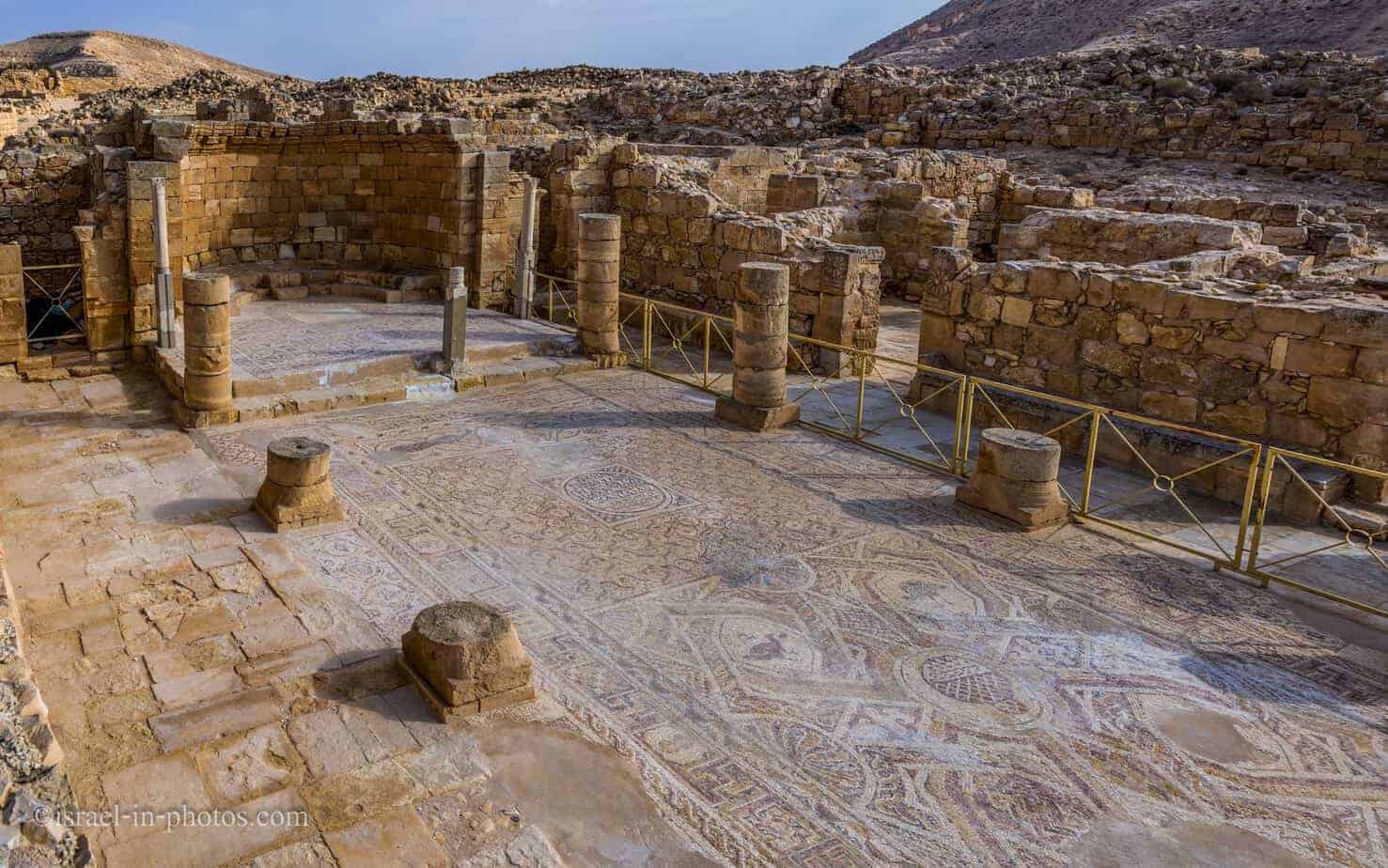
The Western Church (St Nilus Church): The entrance to the church was through an atrium, in the center of which was a covered cistern. The church was built as a basilica – a central nave with two side aisles, three entrances leading into it from the courtyard. An apse at the end of the nave, with rooms used for ritual purposes on either side. The nave is paved in mosaic, decorated with inscriptions, geometric designs, and birds. One inscription is a dedication, which translates as: “Lord, save your servant Nilus, who loves Christ, who founded this church, and Lord, protect his household.” It is this inscription that gave the building its name.
Closeup:

Church of the Saints and Martyrs
The eastern church (#7 on the map) with small marble pillars:

The Eastern Church (Church of the Saints and Martyrs): This church was built as a basilica and was part of a monastery.
Human bones were found inside the church, apparently the bones of the saint who was worshipped here. An impressive flight of stairs leads into the atrium. In the center, there is a large cistern and three entrances to the church. A mosaic floor was uncovered in the central nave, with two crosses, evidence of the antiquity of the church, because after 427 CE, there was a prohibition against putting crosses on church floors. A large cruciform baptismal basin was found in the church for baptizing adults, and alongside it, a small, square font for infants. On the eastern side of the church, in the rooms on either side of the apse, were the remains of the reliquary chests in which the bones of the saints were kept, giving the church its present-day name.
If you look closely, you will see camels in the next photo. We made a camel ride just a few hours before visiting Mamshit. You can read more about it on the camel ride.

Mamshit is not a big national park, and the visit took around two hours.
Mamshit During Sukkot Holidays
Why Sukkot? If you plan to visit Mamshit National Park, consider doing it during Sukkot. Because on Sukkot, they open the market for artists and crafters.
When we arrived at Mamshit, we were told there was a guided tour around the park every round hour. Unfortunately, we missed one and almost an hour to the next one. So we headed to the market.
The Market
The market is marked by #9 and #10 on the map.
The Market: A reconstructed Nabatean street. On either side are rows of rooms used as shops (some people think that the street was an army camp). At Sukkot and Passover, a colorful market is held in and around this street.

The tour started from the stairs next to The Eastern Church (Church of the Saints and Martyrs – #7 on the map), located at the end of the market.


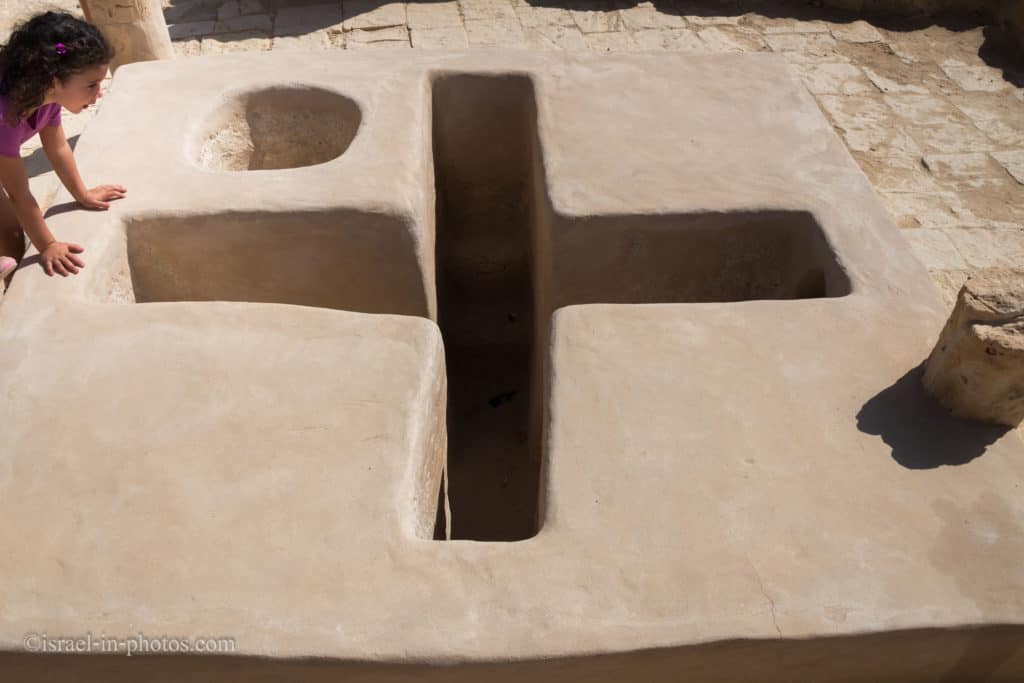
At the market, you can find different antiquities.
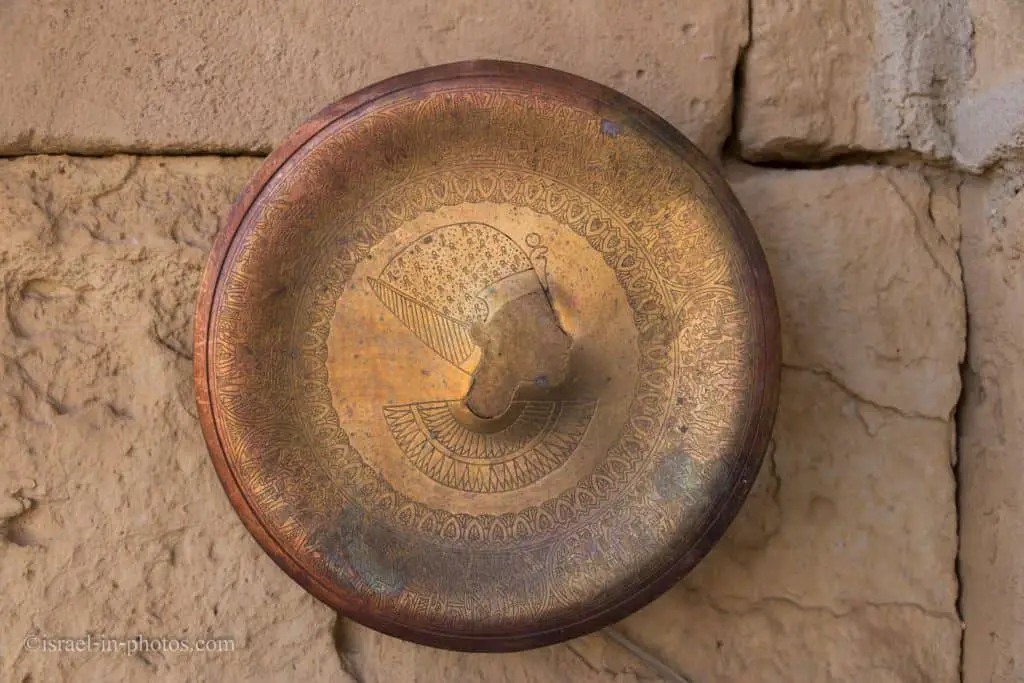
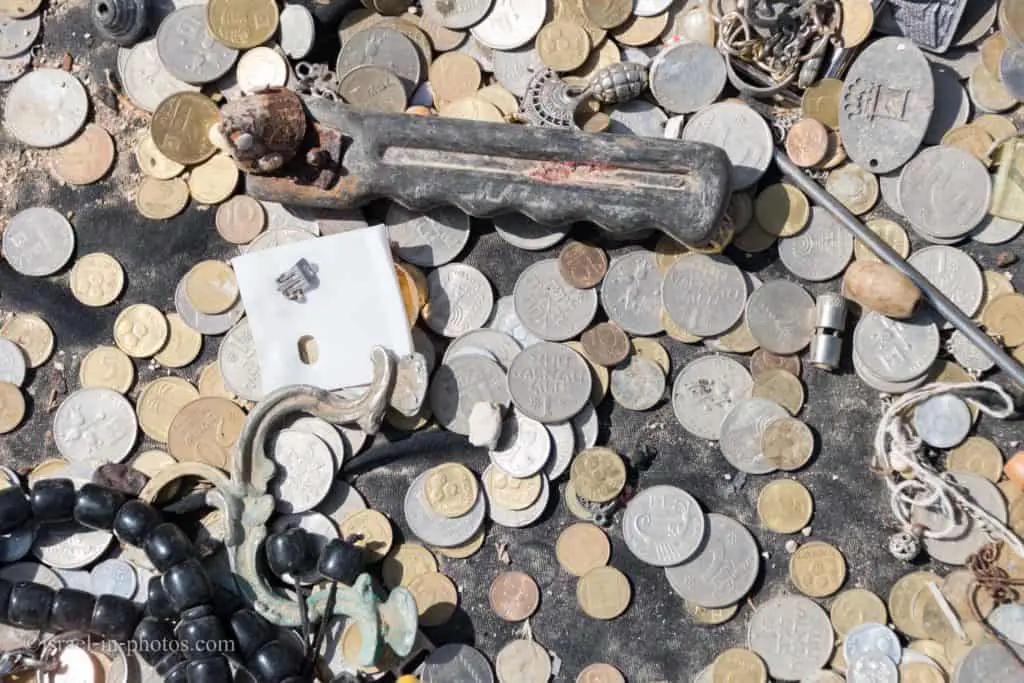
And there was a stand of the glassmaker.
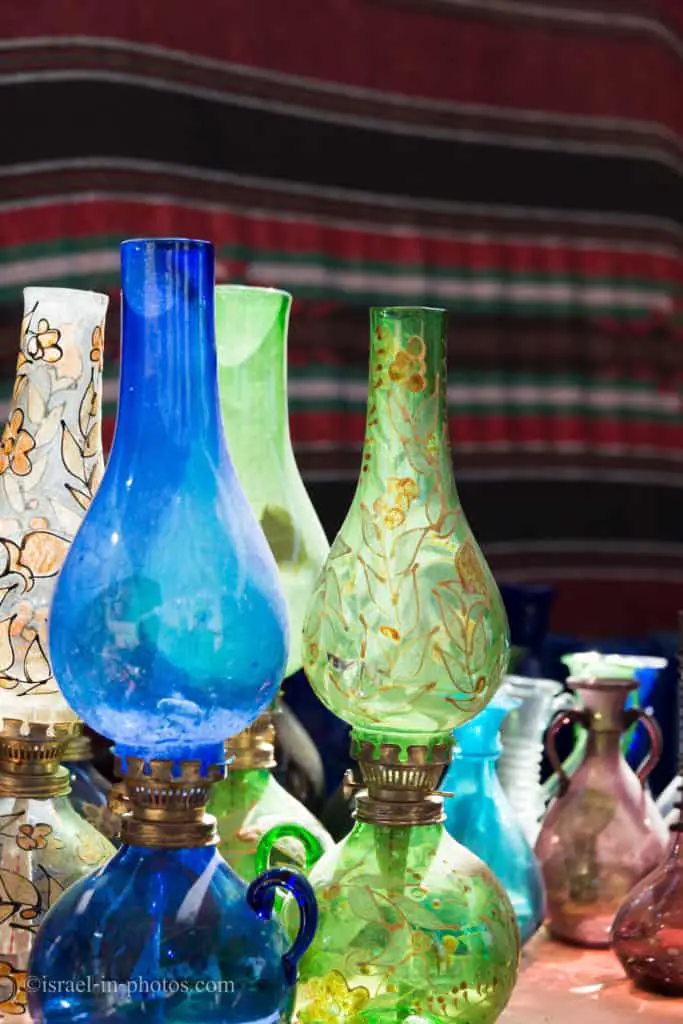
There was also an oven, but we did not see anybody working there.

Glassmaker’s stand:
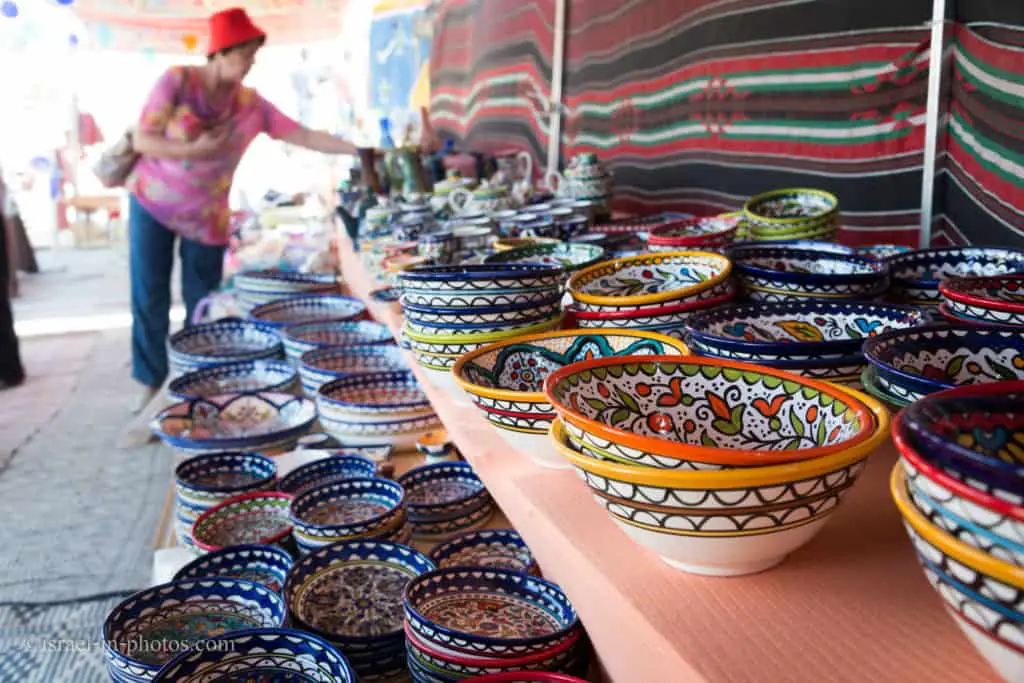
There were food stands. One of them was unique. It was the first time I saw such street nut toasting.

Most of the sellers on the market looked like Bedouins. Despite all the antiquities and the environment, one piece of technology nobody was willing to be left without was the smartphone.

There was a stand for camel wool production. They said camel wool is very healthy and helps with joint and head pain. It is also supposed to help with sleep problems.
Sheep wool on the left, Camel in the middle, and goat on the right:

This woman was preparing a rug from camel wool.
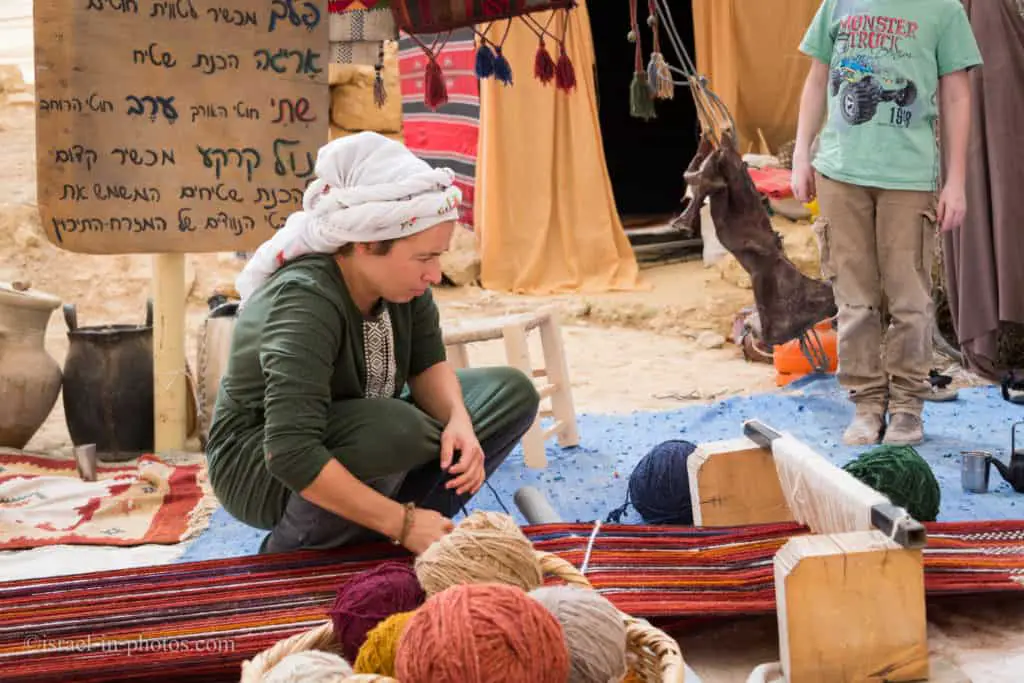
Here is a stand with colored sand bottles. You can buy different-sized bottles, and you can make a custom order where a name will be added to the bottle at extra cost.
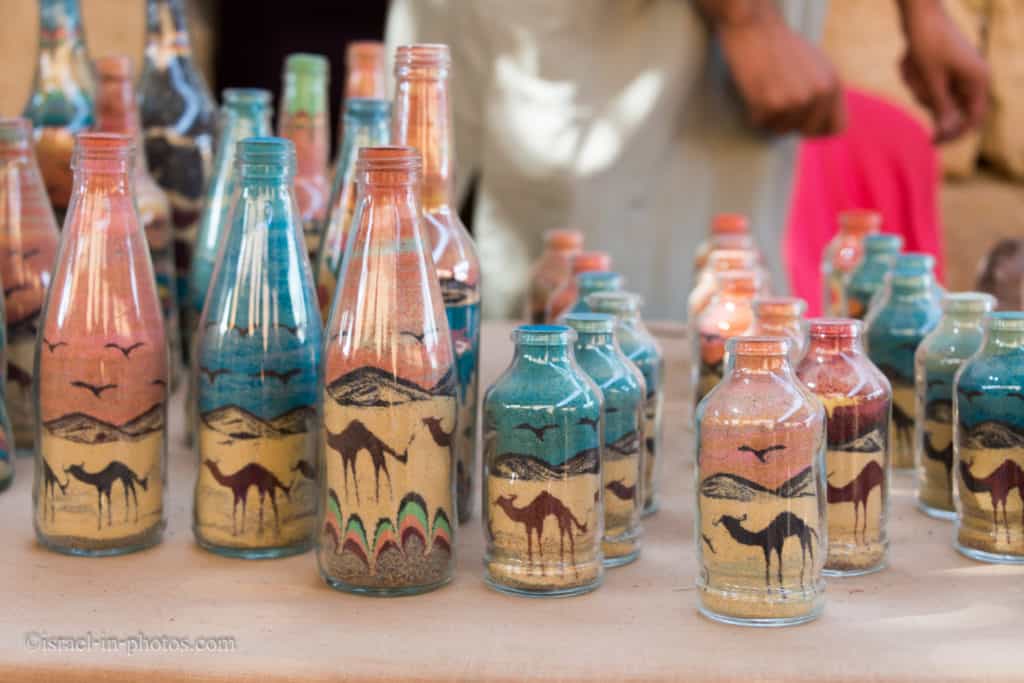
We had guests and thought it would make a nice souvenir, so we bought a couple. The price of a bottle was 40 NIS.
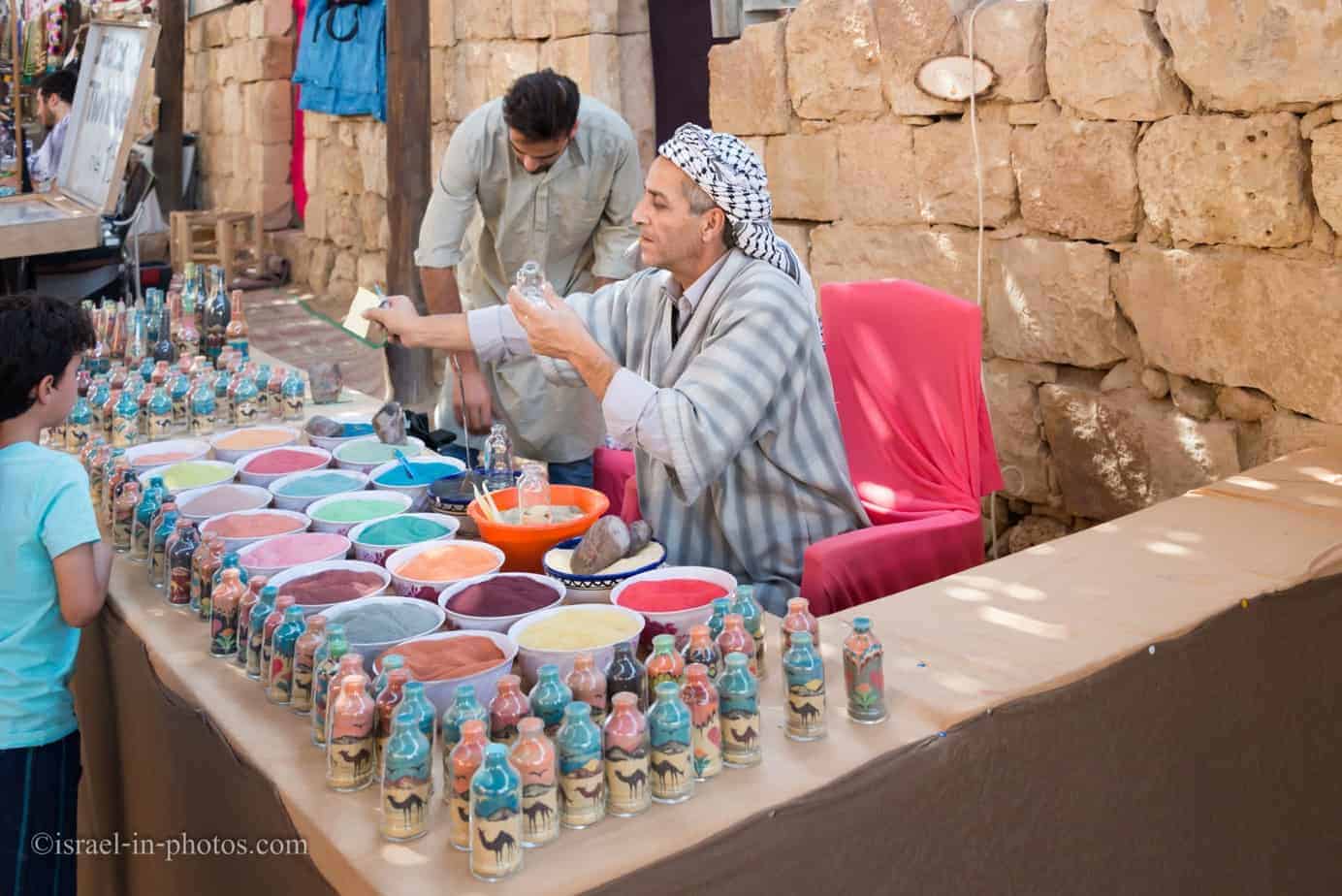
Here you can see the man holding a note, probably making sure the name is spelled correctly.
Old tools:

Various antiquities from metal:

The Tour
We joined the 11:00 tour and started heading towards the wealthy house.
Looking back at the market area:
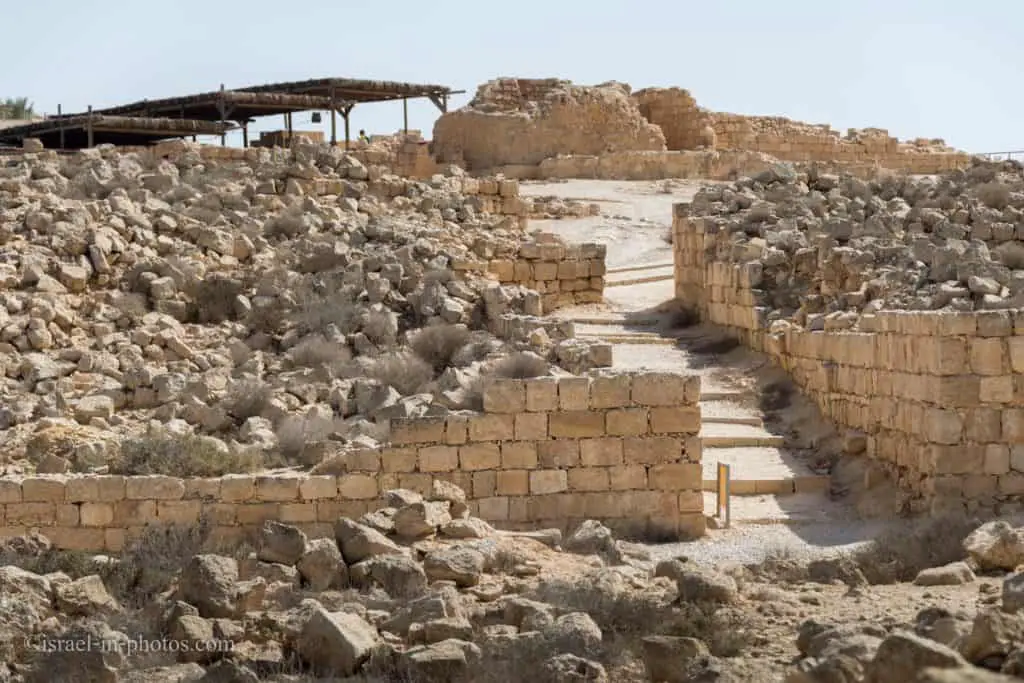
We discussed the history of Mamshit, visited the wealthy house, and climbed the Tower.
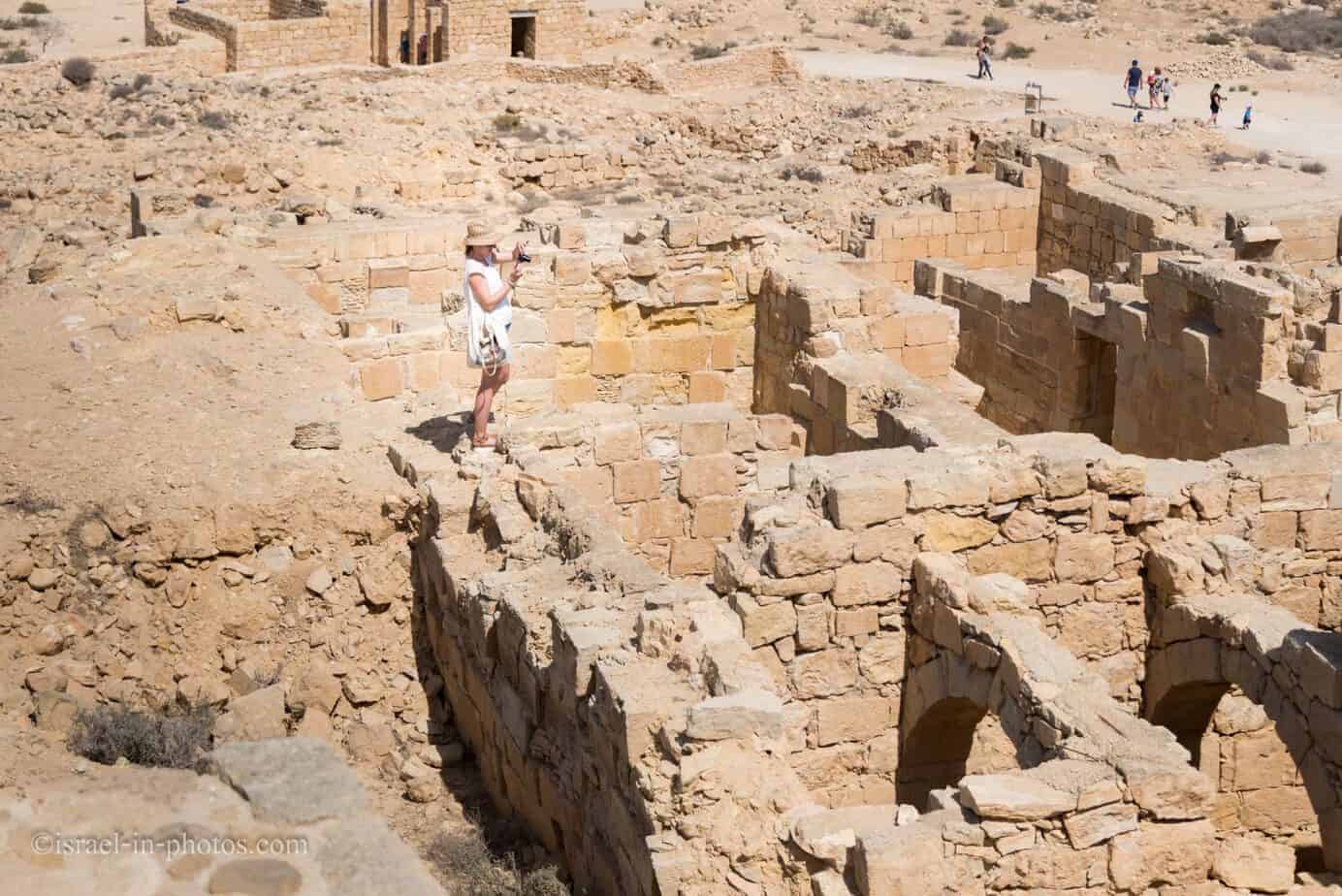
Since the city is in the middle of the desert, water is critical. Close to the Tower, you can find aqueducts:
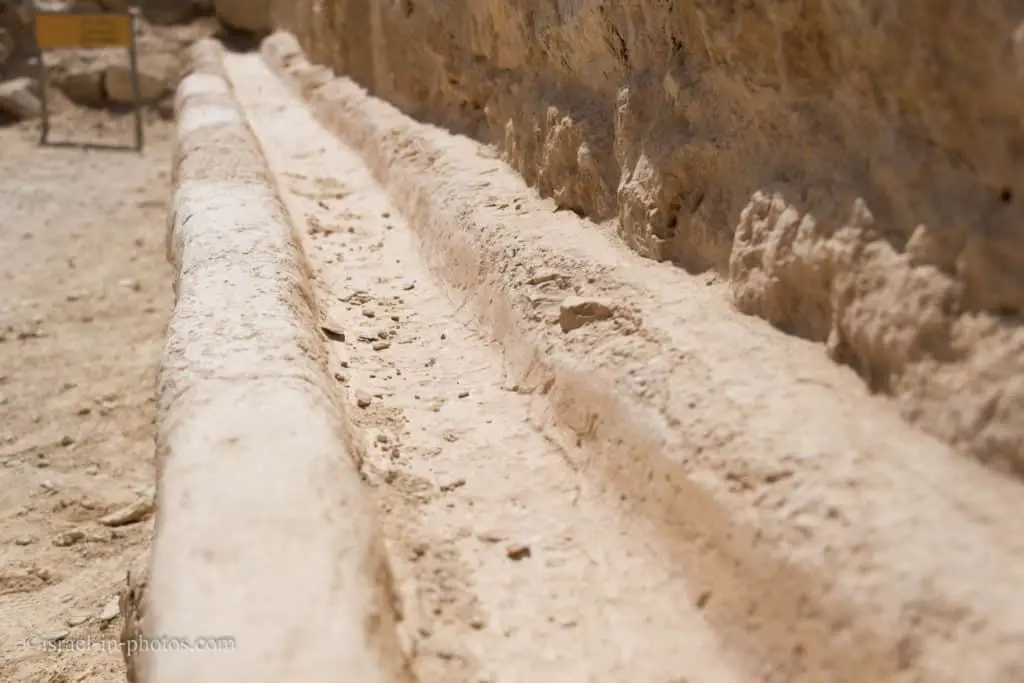
But where was the water coming from? There is barely any rain in this area. Well, most of the water came from Mamshit Stream.
The inhabitants of ancient Mamshit built several dams to collect the water. Today, three of these dams can be seen. The lower dam was renovated during the British mandate and was used by the camel-mounted police. Further down the stream, a well has been dug.
One of the damns:
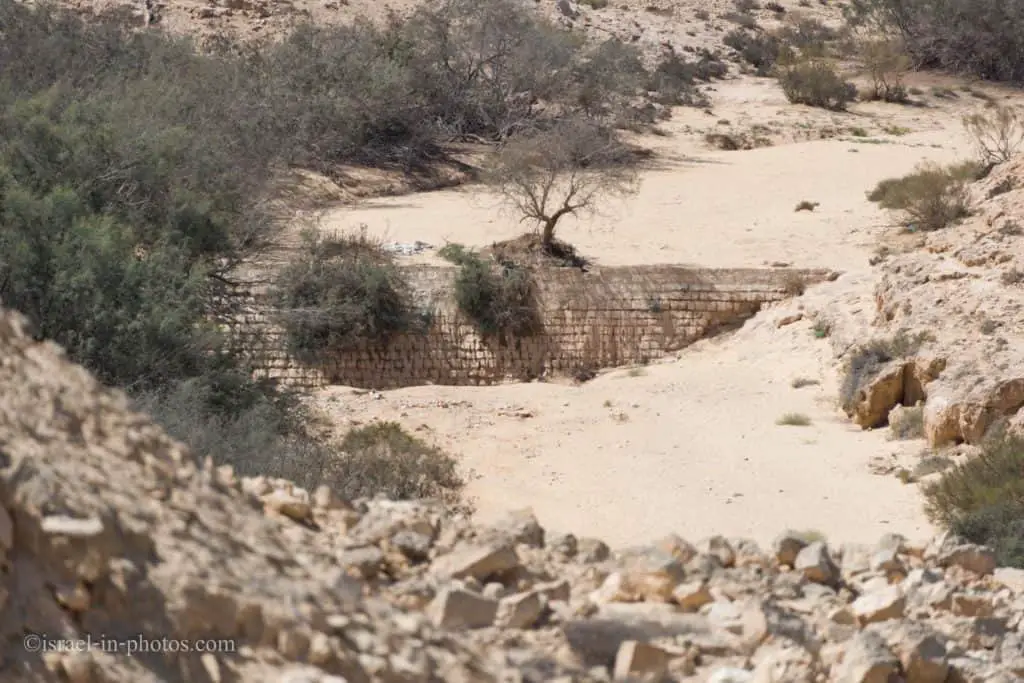
Then we headed to The Western Church (Saint Nilus Church).
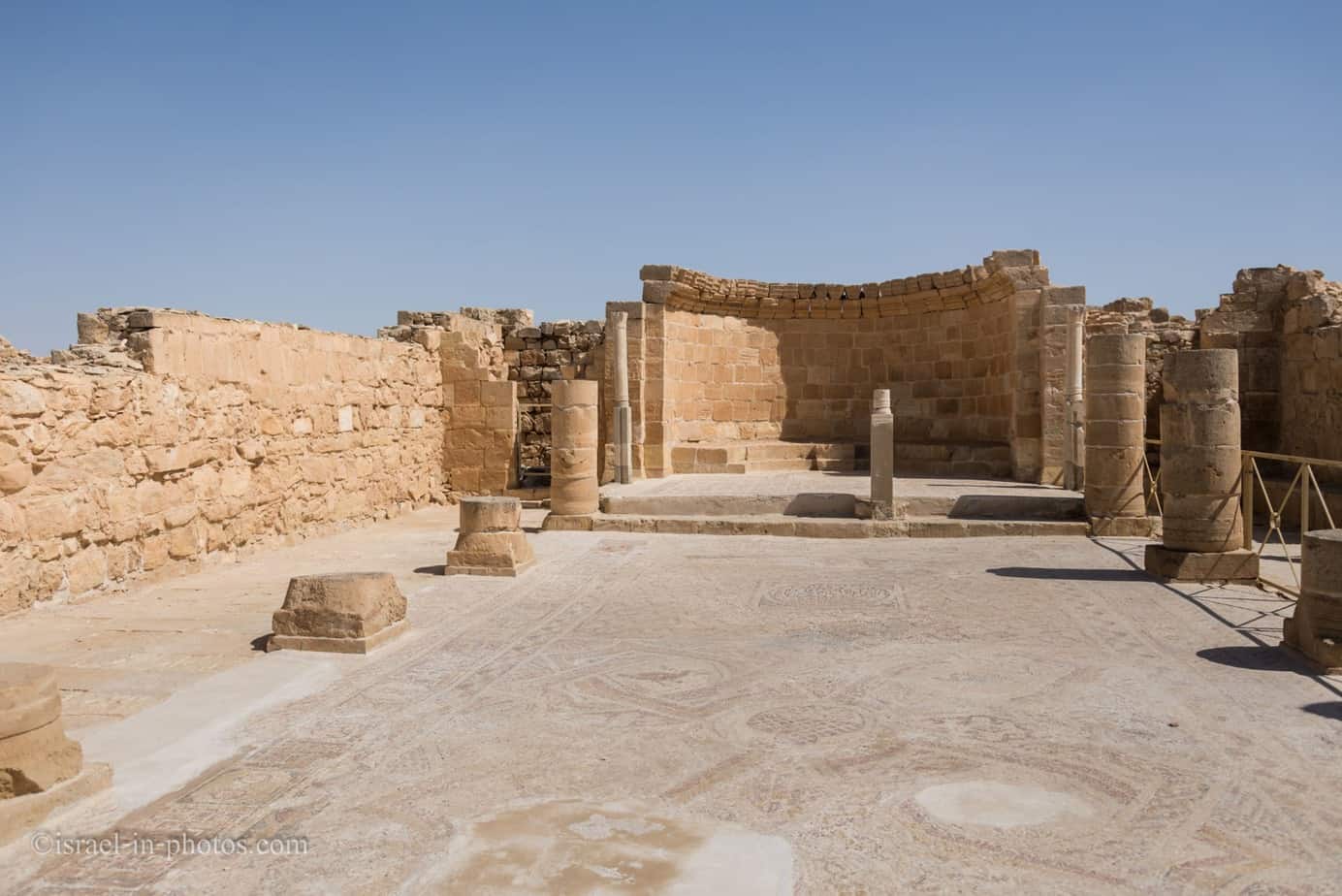
Closeup of the mosaics:
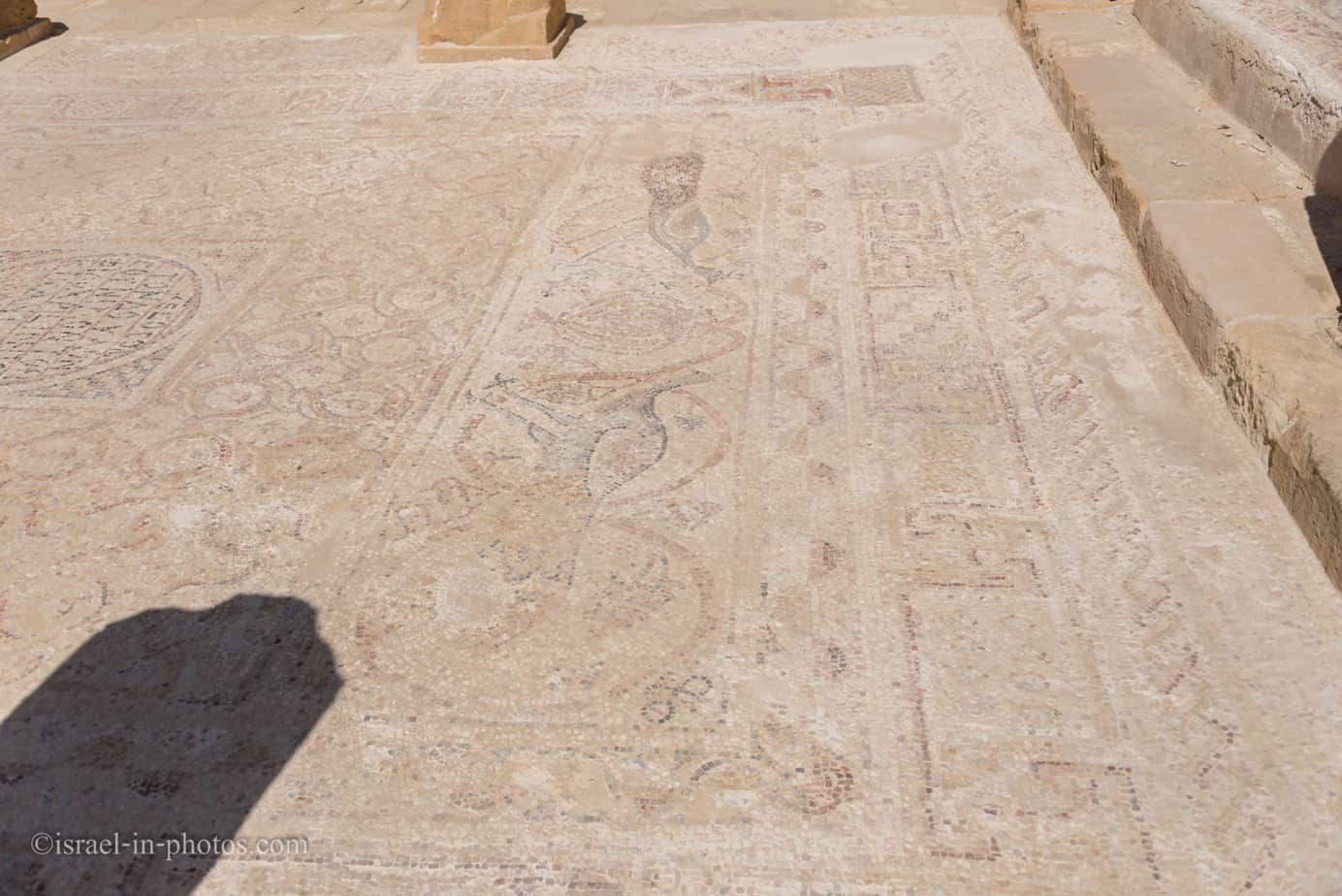
Saint Nilus Church with the Tower in the background.
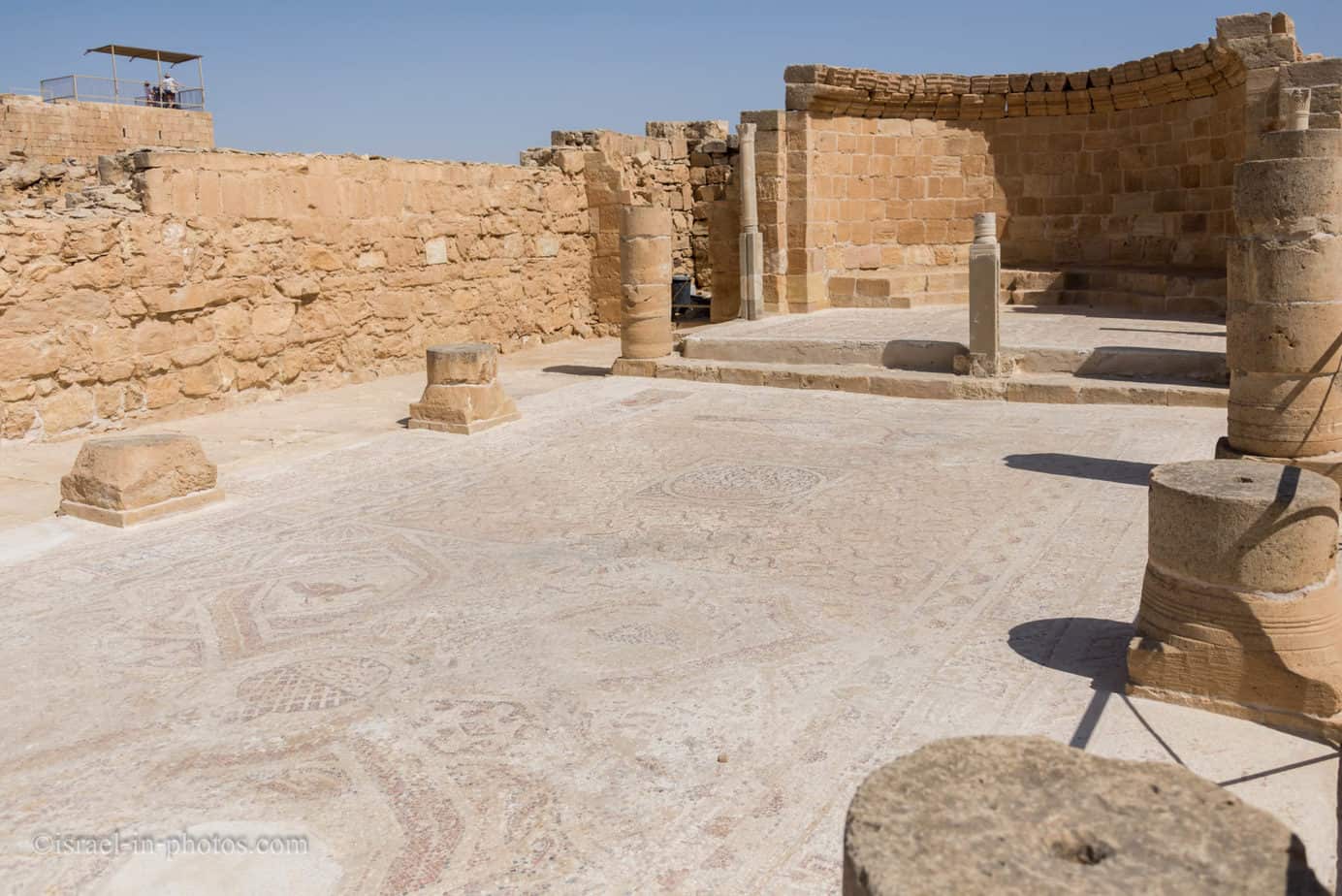
The tour lasted about an hour, and it was a lovely tour. But even in the winter, it can be hot in this area. So wear sunscreen (most of the tour is under the sun).
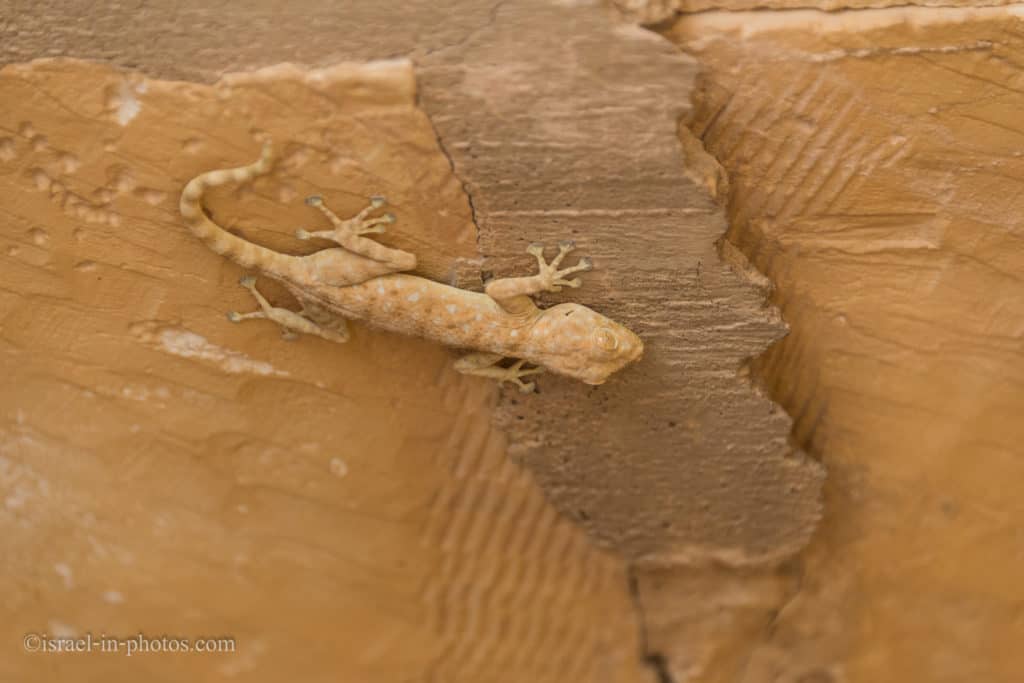
Souvenirs and Attractions for Children
After the tour, we went to another market area (#10 on the map). This area had primarily handmade items and different activities for kids.


At this stand, kids could create clay jars.
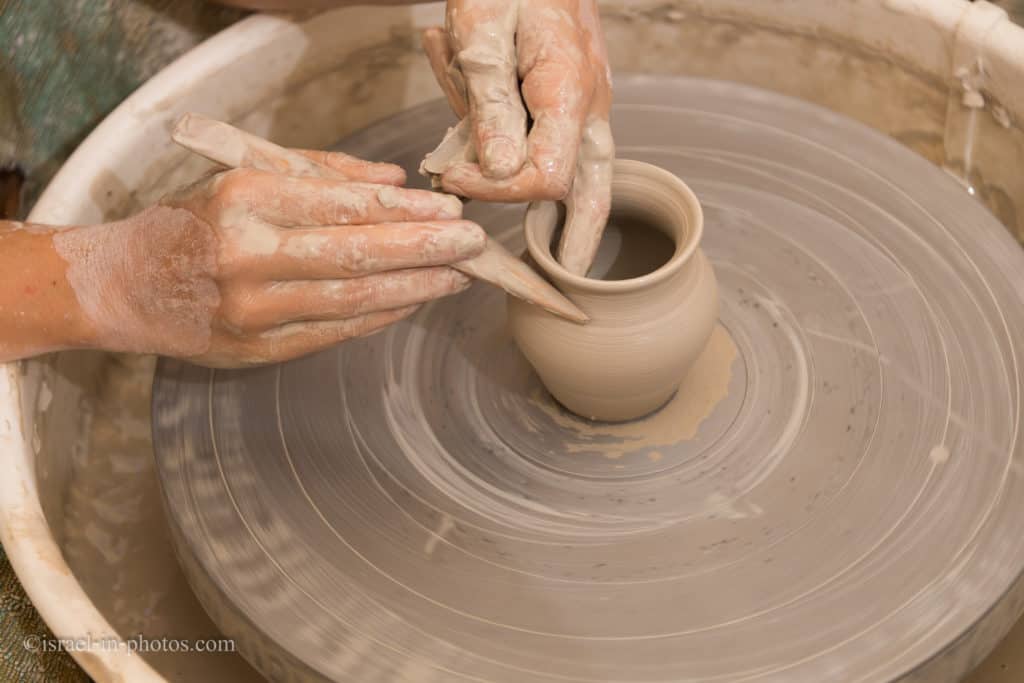
All these activities for kids were at an extra cost.
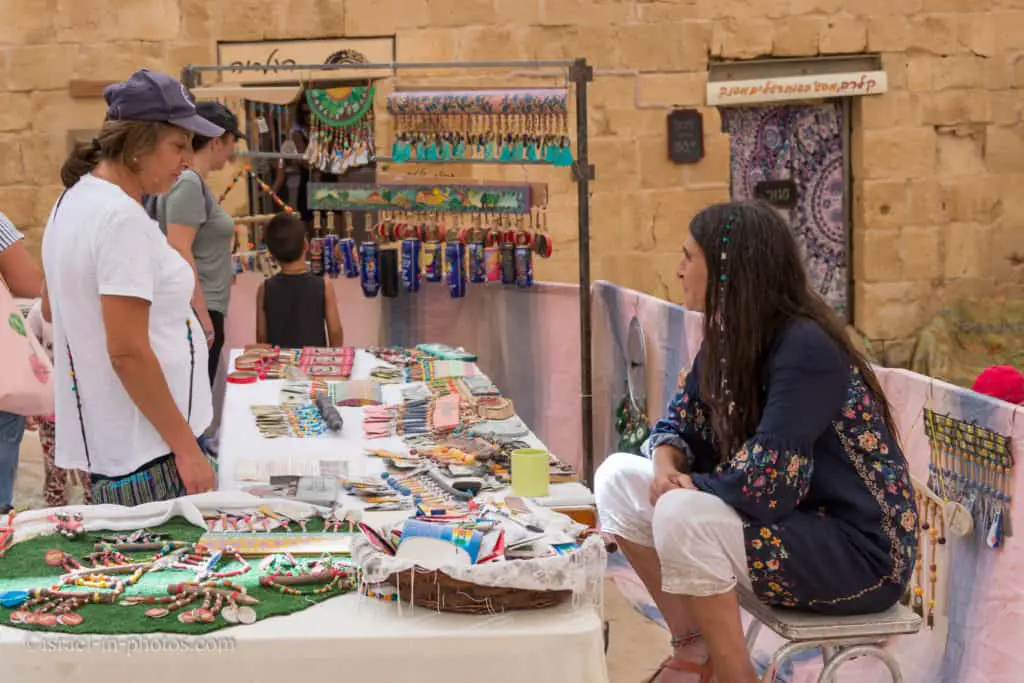
My daughter wanted to fill a bottle with colored sand. There were different sizes and shapes of bottles, and the prices varied from 15 to 45 NIS.
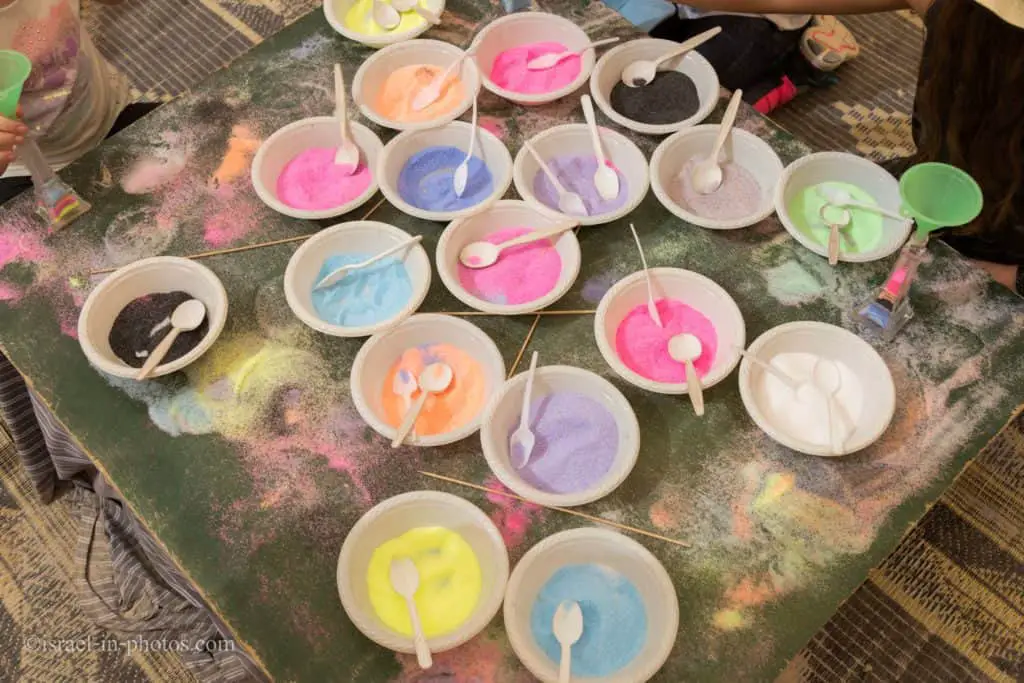
A free gaming corner.

There were also short music sessions, where musicians talked about their instruments and played several pieces.
Unfortunately, we found out about this room only in the end. And by this time, my daughter was tired. So we did not hang out too long. But there was a timetable at the entrance to the room.
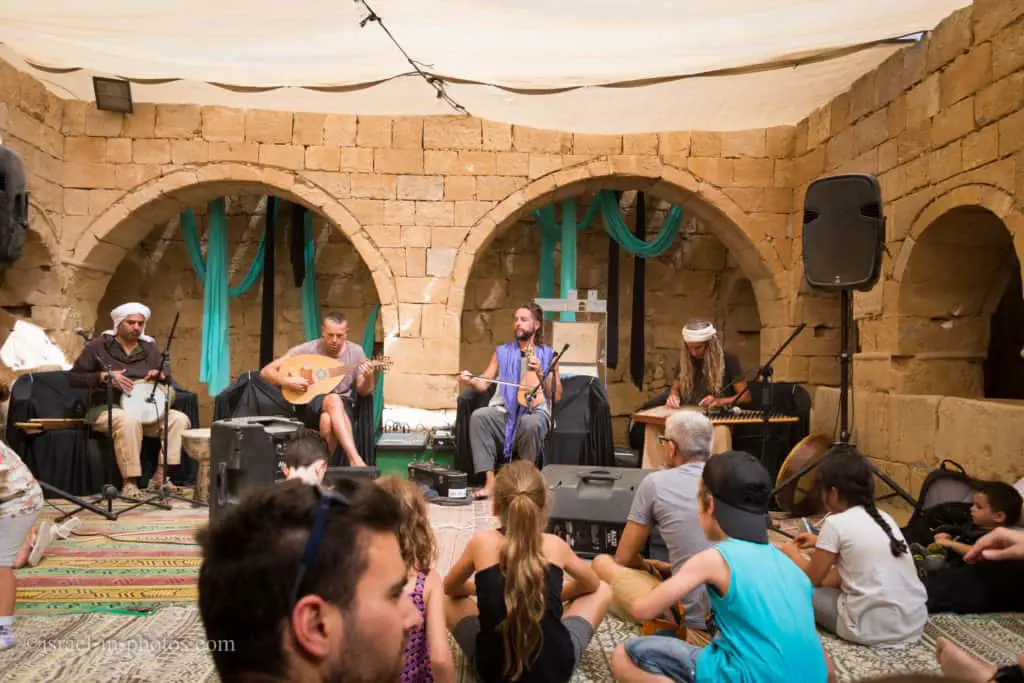

Cartoonist:

Bathhouse
On our way back, we passed near the Bathhouse complex (#11 on the map).
The Mamshit bathhouse is built alongside the reservoir, apparently the source of its water. The bathhouse had three main sections: the frigidarium – cold room, tepidarium – warm room, and caldarium – hot room. The pottery pipes built in the walls, through which there was a flow of hot air, can still be seen.
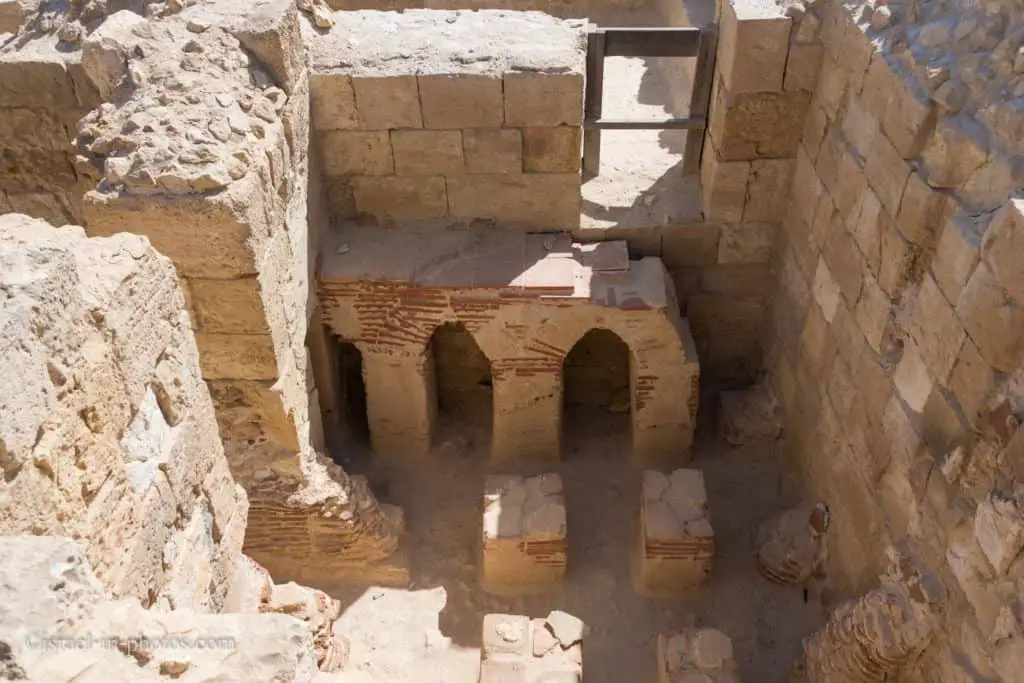
Summary
Mamshit is a marvelous National Park with many findings. Amazingly, people lived in the desert. Even more, they did not simply live. They prospered.
If you visit during Sukkot, you can spend up to a half-day there. And at other times, two hours should suffice. Thus, Mamashit can serve not only as a destination but as a stop on the way. For example, a stop on the way to Eilat. Just keep in mind this is the desert, there is no shade, and it is boiling during the summer. Thus, winter, more specifically, the dry days of winter, is the best time to visit.
Have you visited Mamshit National Park? How was your experience? Tell us in the comments below.
That’s all for today, and I’ll see you in future travels!
Stay Tuned!
Additional Resources
Here are several resources that I created to help travelers:- Trip Planner with Attractions and Itineraries is the page that will help you create your perfect travel route.
- What is the Best Time to visit Israel? To answer this question, we will consider the weather, prices, holidays, festivals, and more.
- Information and Tips for Tourists to Israel will answer the most common questions tourists have about Israel (including safety, passports, weather, currency, tipping, electricity, and much more).
- Israel National Parks and Nature Reserves include a complete list, top ten, map, tickets (Israel Pass, Matmon, combo), and campsites.
- If you are looking for things to do, here are the pages for Jerusalem, Tel Aviv, Haifa, Sea Of Galilee, Akko (Acre), Eilat, Nazareth, Safed (Tzfat), and Makhtesh Ramon.

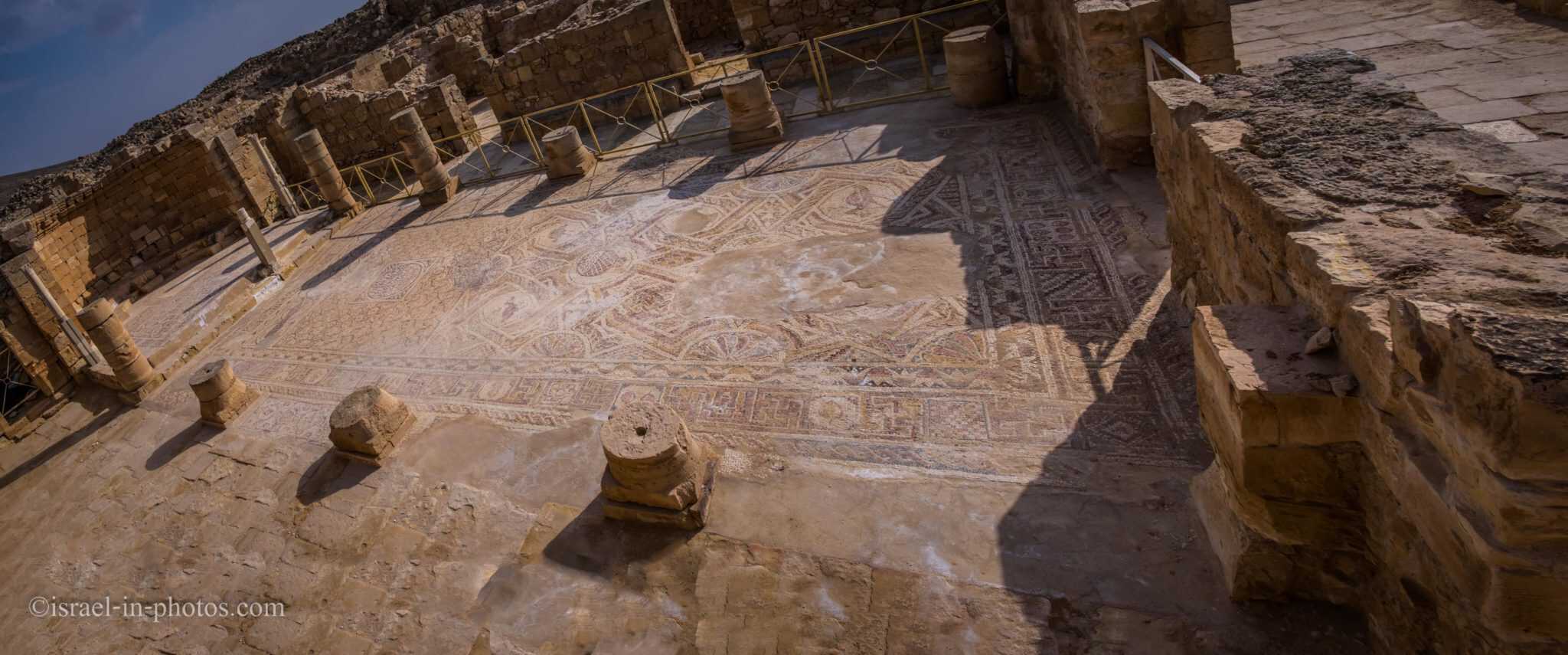
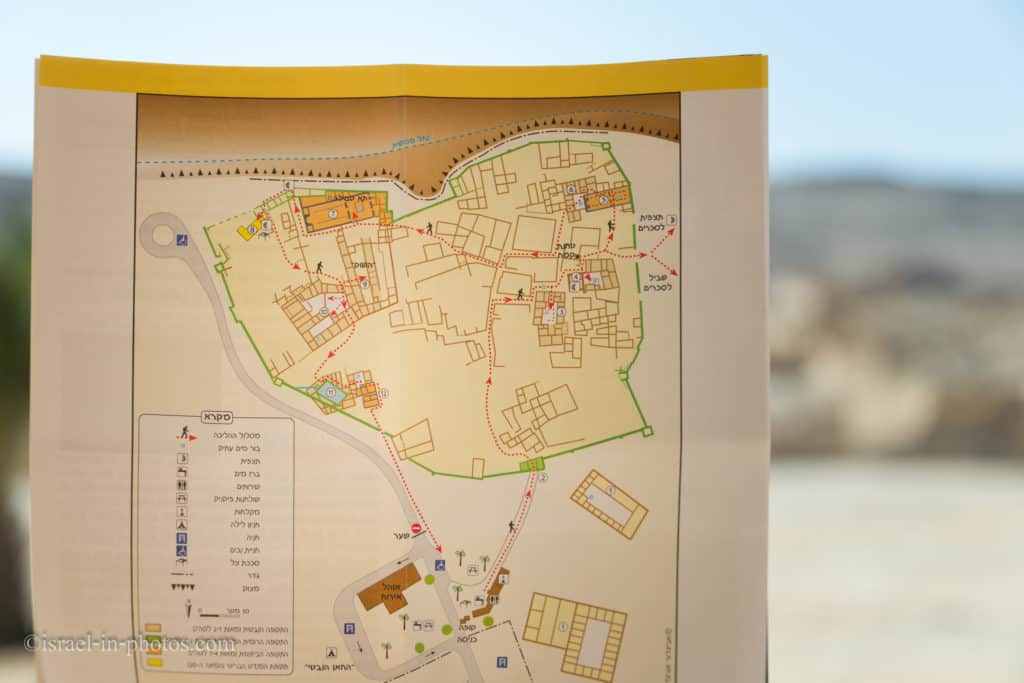

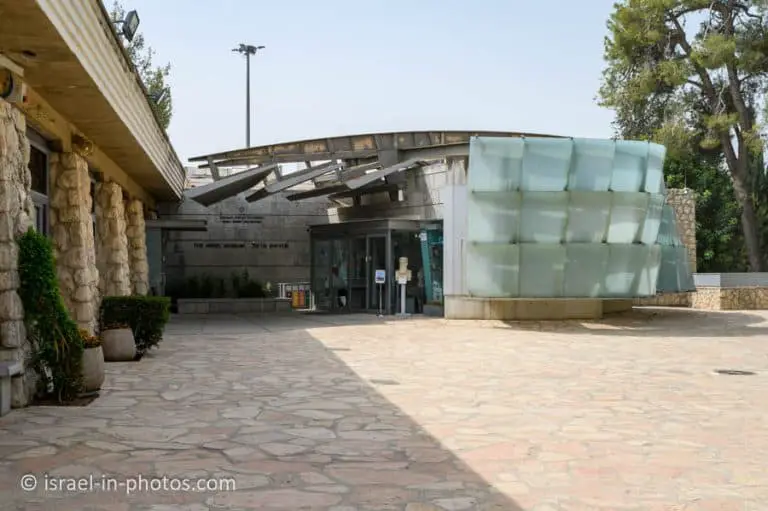
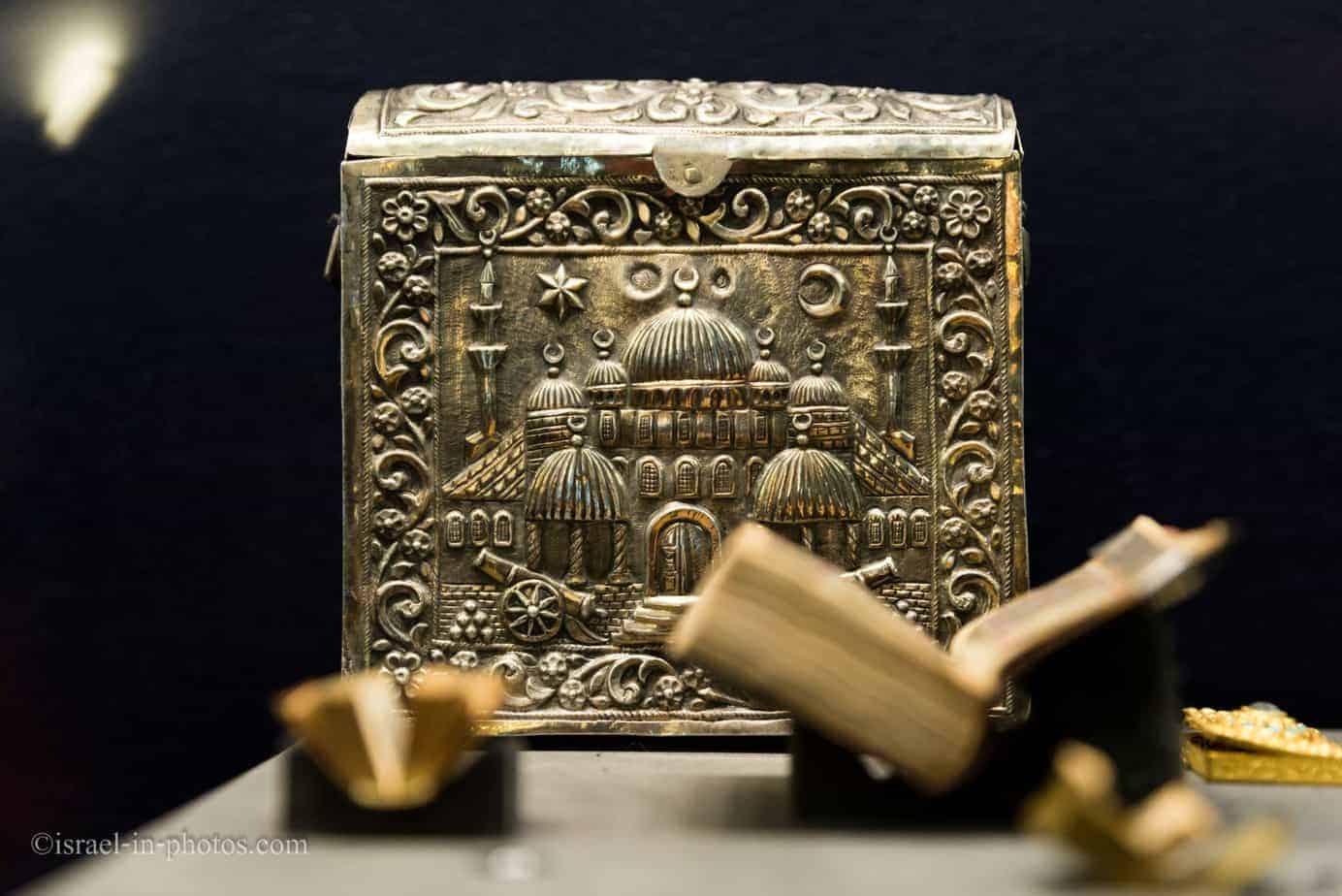




Thank you, Your explanations helped me in planning a trip to the place and also the pictures with the numbers on the map were helpful
I am glad it helped you Amos.